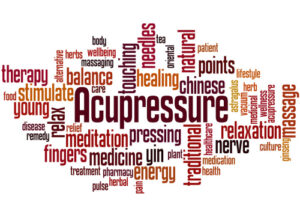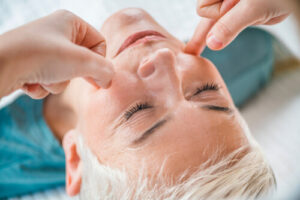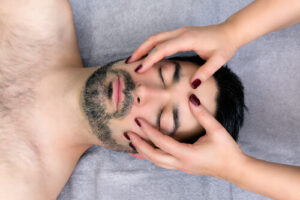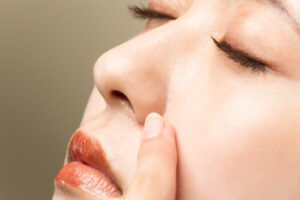Pressure point for mouth pain: A term that may seem mysterious, almost like a closely guarded secret from ancient medicinal practices. In today’s fast-paced world, where instant solutions to facial pain are often sought after, it’s easy to overlook age-old techniques that have been treating toothache for centuries. But what if there was a natural approach, deeply rooted in ancient wisdom, that could offer a reprieve from the discomfort we feel in our mouths? As pain takes hold and over-the-counter solutions pile up on our bedside, the quest for a more holistic answer to relieve a toothache becomes pressing.
Mouth and jaw pain from a toothache, ulcer, or even jaw muscle discomfort can be excruciating and debilitating, affecting our daily activities, conversations, and nourishment. With the myriad of treatments available, from medications to home remedies, it’s a maze out there. Yet, nestled within the outer corner of the vast world of jaw pain and management lies a concept that has been whispered down through the ages, waiting for its renaissance moment.
Dive with us as we journey through time, culture, and science to unearth the potential behind the acupressure and pressure points. Is it a myth, an exaggerated tale, or a genuine solution to severe dental pain hidden in plain sight? Hold onto that intrigue as we venture deeper into this fascinating realm and uncover truths that might redefine your understanding of dental pain relief.
What are the acupressure points?
Acupressure, similar to acupuncture but without needles, is an alternative therapy that involves applying pressure to specific points on the body to relieve pain and other symptoms. These pressure points often correspond to the same locations used in acupuncture. Here are some of the primary acupressure pressure points and their common uses:
1- Large intestine 4 (LI4) – Hegu:
- It is located between the thumb and index finger.
- They are commonly used for relieving headaches, pain, and inducing labor.
2- Liver 3 (LR3) – Taichong:
- It is found between the big toe and the second toe.
- They are used for stress, lower back pain, high blood pressure, menstrual cramps, and insomnia.
3- Stomach 36 (ST36) – Zusanli:
- They located four finger widths below the kneecap toward the outside of the shinbone.
- They are used for fatigue, digestive discomfort, and overall well-being.
4- Spleen 6 (SP6) – Sanyinjiao:
- You will find it three finger widths above the inner ankle bone.
- They are used for menstrual cramps, labor induction, and digestive discomfort.

5- Pericardium 6 (PC6) – Neiguan:
- Located three finger widths above the wrist crease in the middle of the inner forearm.
- Used for nausea and vomiting, including that induced by pregnancy or chemotherapy.
6- Heart 7 (HT7) – Shenmen:
- It is found on the crease of the inner wrist.
- Used for insomnia, stress, and anxiety.
7- Kidney 1 (KI1) – Yongquan:
- It is located on the sole, between the second and third toes.
- Used for grounding and promoting calmness.
8- Gall Bladder 20 (GB20) – Fengchi:
- It is found between the two vertical neck muscles at the base of the skull.
- Used for headaches, migraines, eye blurriness, fatigue, and cold symptoms.
9- Baihui (GV20):
- It is located on the top of the head.
- Used for calming the spirit and lifting mood.
10- Third Eye Point (GV24.5):
- It is located between the eyebrows, where the bridge of the nose meets the forehead.
- It calms the mind, alleviates anxiety, and improves focus.
Remember, acupressure involves applying firm but gentle pressure using the thumb, fingers, palms, middle fingers, or even elbows. If you’re considering using acupressure as a treatment, it’s a good idea to consult a trained therapist or practitioner. It’s also essential to be gentle and attentive to your body’s response, especially if you’re pregnant, as the same firm pressure used signals some points can induce labor.
Where are the pressure points to relieve mouth pain?

Based on the principles of traditional Chinese medicine self, massage, acupressure, and acupuncture, the best pressure points are specific spots on the body where pressure can be applied to relieve pain and other symptoms. For mouth pain, here are some of the key pressure points:
- LI4 (Hegu): Located on the back of the hand, between the thumb and index finger. This point is often used to alleviate pain in the face and mouth.
- ST6 (Jiache): Located where the jawbone meets the cheek, it’s directly in line with the eye’s pupil when looking straight ahead. Applying pressure here can help relieve jaw and tooth pain.
- ST44 (Neiting): Found on the foot, between the second and third toes. This pressure point is often used for tooth pain relief.
- SI18 (Quanliao): Situated at the outer end of the eyebrow, this point can be beneficial for maxillary sinus pain, which can often be mistaken for tooth pain.
- GV26 (Shuigou): Located below the nose, at the midpoint of the philtrum. This is another point commonly used for oral pain relief.
- SI19 (Tinggong): Located in front of the ear, this point can assist in alleviating pain from the temporomandibular joint (TMJ).
While acupressure can offer temporary relief when experiencing extreme jaw or neck pain, sometimes, it’s essential to approach it cautiously. Consult a trained professional or seek medical advice if you need more clarification. Severe or persistent mouth pain could indicate an underlying condition requiring medical attention.
How to apply force at the pressure point for toothache
Applying force to an acupressure point for toothache relief involves certain techniques to stimulate the energy pathways, or meridians believed to flow through the body. Here’s how to apply acupressure points or force to a pressure point for a toothache:
1- Identify the Pressure Point:
- Firstly, locate the specific pressure point you want to target.
- Some common points for toothache relief include LI4, ST6, ST7, and others.
2- Use the Right Finger(s):
- Depending on the location and accessibility of the pressure point, use your thumb, index finger, or a combination of fingers.
- Some points are better accessed using a thumb, while others require the precision of the index or middle finger.
3- Apply Pressure:
- Start by placing your finger(s) on the identified point.
- Gradually apply pressure. The pressure should be firm but not painful. Think of it as pressing a rubber ball – enough to compress but not to the point of discomfort.
- Press down steadily once you’ve found the spot. The pressure should be firm but not painful.
- You can use a static hold or massage the point in small, circular motions. Some practitioners recommend moving your finger or thumb in small, slow, circular motions while maintaining pressure.
- Hold the pressure on the point for about 1-2 minutes. Some sources recommend shorter or longer duration, so you may need to experiment to see what’s most effective.
- After the desired duration, release the pressure gradually.
How Acupressure Works for Mouth Pain Signals

While acupressure cannot treat infections, it may temporarily relieve toothaches. However, a dental appointment remains essential. Acupressure has been an ancient Chinese medicine technique for centuries to alleviate tension and pain.
Generally, acupressure is an alternative therapy centered on energy channels circulating throughout the body. Blockages in these meridians can lead to tension and discomfort in various parts of the body, resulting in symptoms like headaches, back and neck pain, shoulder discomfort, and even toothaches.
Acupressure is like a friendly traffic warden that helps to ease these jams. So, when you’re feeling that pesky mouth pain, it’s just a signal that there’s a hold-up somewhere. By applying gentle pressure on specific spots on the face and jaw, acupressure gets the energy moving again, soothing the pain.
It’s a natural approach, and many people find it quite helpful. But, like with any route you’re unfamiliar with, it’s always best to get directions from a pro, so if you’re keen on trying it out, chat with someone trained in acupressure.
Acupuncture and research:
The effectiveness of acupressure continues to be a subject of research and discussion. Nonetheless, several predominant hypotheses emerge:
- Endorphin Production: It’s suggested that pressing particular points can trigger the release of endorphins, our body’s innate pain relievers.
- Enhanced Blood Flow: Acupressure might promote better circulation, aiding healing and alleviating pain.
- Interruption of Pain Pathways: Some theorize that pressure application can disrupt the transmission of pain messages to the brain.
- Harmonizing Life Energy: Rooted in Traditional Chinese Medicine, it’s believed that acupressure aligns the flow of “Qi” (said as “chi”), or vital energy, fostering balance and well-being within the body.
While many find relief using acupressure, results and effective treatments can vary. Should your toothache continue, or if you’re uncertain about the method, you must visit a dentist and seek advice from an acupressure or acupuncture specialist. An ongoing toothache might indicate a deeper dental issue that demands expert attention.
How can I effectively practice acupressure?

Acupuncture is a well-respected Chinese treatment modality that can be used in the comfort of your own home or the calm environment of an acupressure clinic. If you lean toward the latter, the following comprehensive guide will help you on your journey of rejuvenation:
- Select an Appropriate Setting: Ensure a peaceful, organized area within your residence. This space should resonate with tranquillity, ensuring you can concentrate and fully absorb the benefits of acupressure. Soft lighting and some calming background music can amplify the atmosphere.
- Preparation: Before you start, wash your hands thoroughly. Ensure that your nails are trimmed to avoid any discomfort or scratches.
- Comfort First: Use a cushioned mat or a soft rug to sit or lie down. You may need to sit, lie, or even stand, depending on the pressure point location. The key is to be as relaxed and comfortable as possible.
- Breathing: Initiate the process by taking a few deep, rhythmic breaths. Oxygenate your body and let go of tension. Visualize stress leaving your body with each exhale.
- Application: Once you’ve located the pressure point, use your finger or thumb to apply firm, but not painful, pressure. Massage the point in small circular motions or press down, depending on what feels right for you.
- Duration: Each pressure point should be stimulated for about 1-3 minutes. However, listen to your body. Some points benefit from longer stimulation, while others require shorter duration.
- Repetition: You can revisit the pressure points multiple times throughout the day, especially if you find particular relief from specific points.
- Safety First: Acupressure is generally safe, but it’s essential to remain attentive. If at any point you experience acute pain or the area becomes inflamed, stop immediately and consider consulting a professional.
Remember, while acupressure can be a powerful tool for self-healing, if your symptoms persist or you’re unsure about any part of the process, seeking guidance from a trained acupressure therapist is advised.
Why is My Toothache Worse at Night?
A toothache that intensifies or becomes more noticeable at night is a common complaint, and there are several reasons for this phenomenon:
Positional Changes
Lying down can increase the blood flow to the head, intensifying toothache pain. This increased circulation can amplify the pain sensation, especially if you’re lying on the side of the body, releasing the pressure signals to the affected tooth.
Distractions are Fewer:
During the day, you’re occupied with various activities, which can distract you from the pain. There are fewer distractions at night, especially when trying to sleep, making you more aware of the discomfort.
Absence of Painkillers:
If you take painkillers or use other remedies during the day, their effects may wear off by nighttime if not reduced, causing an apparent increase in pain.
Sinus Pressure:
For some people, lying down can increase sinus pressure, especially if they have a sinus infection. This added pressure can exacerbate dental pain, particularly if the roots of the teeth are close to the sinus passages.
Clenching or Grinding:
Some people clench their jaw or grind their teeth during sleep (a condition known as bruxism), which can intensify tooth pain, especially if a tooth is already sensitive or decayed.

Inflammation and Swelling:
Inflammation often increases at night due to reduced cortisol levels. If a tooth or surrounding gum tissue is inflamed, the pain might feel more pronounced during nighttime.
Acid Build-up:
Consuming acidic foods or drinks before bedtime and not maintaining proper oral hygiene can cause an increase in acid levels in the mouth. This can exacerbate tooth decay and, in turn, toothache.
Referred Pain:
Sometimes, pain from one area can be referred to relieve toothaches in another. For instance, pain from the jaw or ear can feel like a toothache and facial pain may become more noticeable when lying down.
Seeing a dentist is essential if you’re experiencing a persistent toothache, especially one that keeps you awake at night. They can provide an accurate diagnosis and appropriate treatment options to relieve your mouth pain.
When Should You Seek Medical Attention?

Acupressure, rooted in ancient healing practices, can temporarily alleviate discomfort or reduce pain. However, it is essential to emphasize that it should always be the same as a thorough evaluation or treatment from a qualified dentist or medical doctor. Consider acupressure as a supplementary measure to ease discomfort while awaiting medical attention.
It is imperative to seek immediate professional care under the following circumstances:
- If the pain persists and escalates in intensity, it becomes intolerable or different from any pain you’ve previously experienced.
- If you develop symptoms like a fever, it could indicate an underlying infection requiring attention.
- Observing swelling, especially in the mouth, face, or neck area, is a cause for concern, signaling potential infections or other medical issues.
- If you encounter challenges while swallowing or experience breathing difficulties, this could indicate severe conditions that need immediate assessment.
- Any bleeding from the mouth, whether continuous or sporadic, should not be overlooked and requires an urgent medical evaluation.
Remember, while acupressure might give you momentary relief following symptoms, addressing the root cause of your discomfort or pain is crucial. Always prioritize a visit to a healthcare professional when in doubt.
Conclusion
Exploring the pressure points that can relieve your mouth pain has enlightened us about the wonders of ancient acupressure techniques. While these pressure points can temporarily relieve the discomfort associated with oral issues, it’s essential to remember their limitations. Acupressure can soothe, but it isn’t a definitive solution.
Always consult a dentist or medical professional for persistent or severe mouth pain. This approach ensures you get the best of both worlds: immediate nerve pain relief through pressure points and long-term solutions to tooth pain through professional care.
References:
https://www.healthline.com/health/pressure-point-for-toothache#the-pressure-points
https://www.medicalnewstoday.com/articles/pressure-points-for-toothache
https://www.ncbi.nlm.nih.gov/pmc/articles/PMC8585907/
https://www.sciencedirect.com/science/article/pii/S2005290113000885
https://www.webmd.com/balance/acupressure-points-and-massage-treatment

